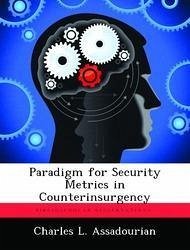Current Army doctrine lacks a security metrics paradigm similar to the infrastructure paradigm SWEAT-MSO. Because of this, commanders, staff, subordinates, other government leaders, and the media lack a simple and common set of terms to use when communicating an assessment of security in a counterinsurgency environment. This thesis examines the history of the use of counterinsurgency metrics for security. It examines one successful counterinsurgency, United Kingdom in Malaya, 1948-1960; one unsuccessful counterinsurgency, France in Algeria, 1954-1962; and one ongoing counterinsurgency, Allied Elements in Iraq, 2003-Present. This research examines each of these regarding two lenses: systems analysis and tipping points. The successful metrics used in these counterinsurgencies are summarized in the security incident chronology acronym SLTWCT "slitwick-tee" (Security Incidents, Local Security Force Organization, Tips and Reports, Warrants, Captures and Sensitive Site Exploitation, and Trials).
Hinweis: Dieser Artikel kann nur an eine deutsche Lieferadresse ausgeliefert werden.
Hinweis: Dieser Artikel kann nur an eine deutsche Lieferadresse ausgeliefert werden.








